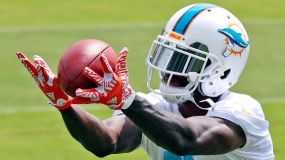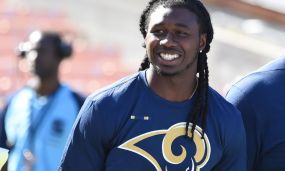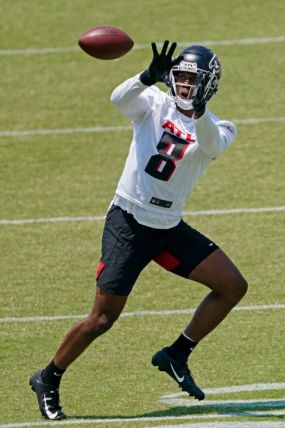Rookie Report Special: WR Success Rates
Rookie Report Special: WR Success Rate Based on Draft Round & College Competition
If you play fantasy football, you’re probably well aware of how important the WR position is to fielding a quality team. While top running backs typically are more consistent week-to-week, the top WRs tend to be more consistent year-to-year, especially as NFL offenses have become more pass-heavy in recent years. In redraft leagues, this gives us a pretty good picture of who the top WR options are because of their track records of production. Sure, there are other factors that come into it, but we have a pretty good base to start from when projecting them. The question I looked at today: How do I evaluate & project the young wide receivers that don’t have a track record yet for dynasty leagues?
There are a lot of people more skilled than I at talent evaluation that have done exhaustive work to try to answer this question on a player-by-player basis. They watch film, study 40 times, hand size, height, SPARQ scores, etc., and try to quantify the talent level of each individual prospect. While that approach is certainly thorough, it still isn’t an exact science. There are still big misses. What I set out to do was take a step back to look at the big picture, and see if there are some bigger trends we can draw from based on draft round and the competition level of their college that can provide context to those individual player evaluations.
To do this, I researched every wide receiver drafted from 2000-2016. I categorized each by their draft round (1,2,3 or 4+), and whether or not they went to a power-5 school (or BCS at the time). I included Notre Dame as a power-5 school. To determine success rate, I classified every WR who posted an 800-yard receiving season as a ‘hit’, and any WR who failed to do so as a ‘miss’. If the player posted 3 or more 800-yard seasons, or 2 or more 1,000-yard seasons, I classified them as a ‘big hit’. I also looked into what % of each group posted a season in which they were targeted 100 or more times. I didn’t know what the results would look like going in, but here are the results I found:
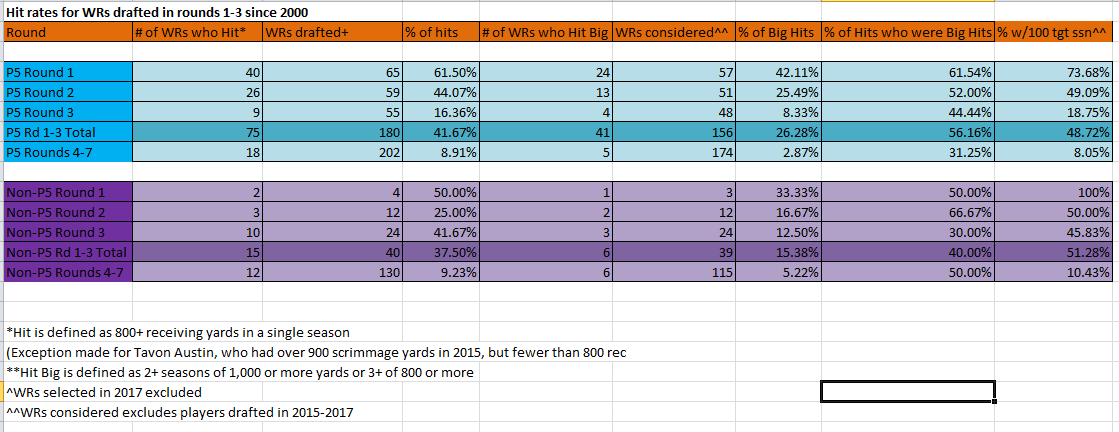
1st Round Picks
Some of these numbers are pretty much what you’d expect. Not surprisingly, 1st round picks tend to be the most likely to be a ‘hit’, and are most likely to see 100 targets in a season (a whopping 75% of all 1st rounders from 2000-2014 have). The 1st round picks also have the highest ‘big hit’ rate among both, P5 and non-P5 schools. There were 10 wide receivers drafted in the 1st round in 2015 and’16, all from power conferences, and so far only one has seen 100+ targets and/or topped 800 yards (Amari Cooper). Based on the numbers, we should see another 5 of them ‘hit’ at some point, and another 3 of them be a ‘big hit’. Obviously these numbers are percentages over time, so there isn’t any guarantee of how many will step up and hit the marks, but I’m confident at least a few will. Here is the full list of WRs who are yet to hit the 800-yard mark from that group:
Nelson Agholor, Kevin White, Breshad Perriman, DeVante Parker, Phillip Dorsett, Corey Coleman, Will Fuller, Josh Doctson, and Laquon Treadwell.
Guys I’m buying:
DeVante Parker: Parker was targeted 87 times last year. His target total went up by 37 from his rookie season even as the Dolphins’ number of pass attempts went down by 111. His catch rate increased by 12.4% from year one to year two also, and Jarvis Landry is an impending free agent. I think Parker is the most likely of this group to hit the 800-yard mark this season, and has the talent to be a fantasy asset for years to come.
Breshad Perriman: Perriman is probably not a name that excites you after missing his whole rookie season with injury, and posting just a 50% catch rate and 7.56 yards per target on his way to a WR73 finish last year (standard scoring). The reason I’m excited about Perriman is that the Ravens lost a whopping 352 targets from last year’s team and have only added Jeremy Maclin in the offseason. Perriman can be had for a reasonable price, and should get plenty of opportunities. If Perriman can deliver on the promise that made him a 1st round draft pick, he should have a bright future with Maclin pushing 30 and Mike Wallace already on the wrong side of it. Wallace is a free agent after this season, and Maclin after next. Acquire Perriman where you can.
Corey Coleman: Coleman has had several soft tissue injuries that have slowed his progress, and still has an unsettled quarterback situation, but I’m a fan of what the Browns are building and Coleman has a great shot to be the lead WR there. He was targeted 73 times as a rookie, and he missed 6 games. 100 targets is likely just a matter of health at this point, but his efficiency will have to get better to be a true fantasy asset. He had a catch rate of just 45.2% and just 12.5 yards per catch. Normally a low catch rate comes because of a lot of downfield passes…but that ypc number doesn’t back that up. Hopefully the efficiency metrics will improve with improved quarterback play. If he’s healthy and doesn’t top the 800-yard mark this year, it would be a surprise.
Guys I’m interested in if the price is right:
Josh Doctson: I’m not extremely bullish on Doctson for 2017, but I still like his long-term outlook. I do believe he’s more talented than Jamison Crowder, but after taking 2016 as pretty much a redshirt year, he’ll have a bit of a learning curve to become a featured weapon in Washington. The signing of Terrelle Pryor certainly hurt Doctson’s upside for this year as well. Pryor signed just a one-year deal, and may bolt for bigger money if he has a breakout season, and Jordan Reed is always one bad concussion away from his career being in jeopardy. There is a real opportunity for Doctson to be the WR1 in DC by 2018.
Nelson Agholor: Agholor has been a big disappointment for the most part thus far. He was drafted to a team where he would have the chance to play right away, but he’s managed to put up just 648 yards total in the past 2 seasons. He has an unproven quarterback in Carson Wentz, posted just a 52% catch rate in each of his first two years, and the team just went out and signed Alshon Jeffrey and Torrey Smith in the offseason. If early camp returns are any indication, the additional competition has lit a fire under Agholor. He’s been drawing rave reviews from anyone who has seen him practice, and former Eagles’ WR Mike Quick said Nelson is the most talented WR on the roster. Rumors have started swirling that the team is shopping slot WR Jordan Matthews. Obviously it’s tough to buy into Nelson given the track record, but if the owner isn’t factoring the camp hype into his asking price, it might be worth it to take a flier on that camp hype being real.
Will Fuller: I mention Fuller here because you may be able to get him at a discount after his broken collarbone. I’m not a huge fan of his game, but the Texans like what he can do as a field-stretcher. He was targeted 92 times as a rookie, and his efficiency will hopefully get better with Brock Osweiler gone. I don’t expect that he will be a perennial WR2 or better, but his speed will make him an asset in best-ball leagues. I don’t know that he’ll ever reach ‘big hit’ status in the chart above, but I’d be willing to bet he’s at least a ‘hit’.
Guys I’m avoiding:
Laquon Treadwell: Treadwell was active for 9 games last season, and managed just one catch on 3 targets. He battled through nagging injuries, and already has a leg injury in training camp again this year. He was criticized for his clocked speed at the combine (4.64 40-yard dash) by the draftnik crowd, and he’s failed to make much of an impact as a pro. It doesn’t bode well for Laquon that Jarius Wright is getting higher praise that he is in camp. Treadwell may eventually make good on his draft slot, but it’s not a bet I want to make at this point.
Kevin White: After missing his entire rookie season with nagging foot issues, White came back last year and turned 9 targets per game into 9.65 PPR fantasy points per game in the first 4 weeks before being lost to injury yet again. White ranked 13th in the league in targets per game, but finished outside of the top 60 WRs in terms of points per game despite that volume. He finished behind players like Brandon LaFell, Eddie Royal, Tavon Austin, and Eli Rogers. While White is listed as a starter entering this preseason, the team did bring in veterans Kendall Wright, Victor Cruz, Markus Wheaton, and Rueben Randle to challenge for playing time. Cameron Meredith is locked in at the other starting spot. Even if White manages to stay healthy, I don’t think he ever realizes the potential that got him drafted in the first round.
Phillip Dorsett: Dorsett’s career seems likely to have a similar arc to Darrius Heyward-Bey’s. He was over-drafted due to his blazing speed, but didn’t have the nuance of the position down. He may become a better route runner with years of experience, but his real chance to become a fantasy stud will have passed him by before that happens. He saw his opportunities regress as the season went on last year. He was targeted just once in 3 of the final 5 games last year after seeing at least 3 in every other game of the season, and he has no clear path to get above TY Hilton or Donte Moncrief on the depth chart. I would have a hard time holding Dorsett as anything more than an end of the roster flier at this point.
2nd Round Picks
There isn’t any noticeable trend in the second round that is easy to exploit. Second round WRs from power-5 schools have been a little worse than a 50-50 bet to find their way to 800 yards in a season. There isn’t much you can do with that to make a strong determination on Curtis Samuel or JuJu Smith-Schuster. Typically, non-power-5 WRs selected in the second round have been a bad bet, with just 3 of 12 reaching the 800-yard mark. Twelve is a pretty small sample size to work with, so that doesn’t necessarily mean Zay Jones and Tyler Boyd are doomed. The signing of Anquan Boldin won’t help Zay’s year one outlook though, just as the John Ross pick won’t help Boyd. The one recommendation I would make with a wide receiver drafted in the second round is this:
Buy Davante Adams: As I mentioned above, there are just 3 small school receivers drafted in the 2nd round since 2000 that have eclipsed 800 receiving yards in a season. The first two to do it were Greg Jennings and Vincent Jackson. Those two receivers have put together seven WR1 seasons and another three WR2 seasons between them. The third to do it was Adams. Typically, when a smaller school receiver picked in the 2nd round shows he belongs in the NFL, he goes on to do big things. Here are the players that haven’t hit 800 yards: Aaron Dobson, Brian Quick, Titus Young, Donnie Avery, Jerome Simpson, Dexter Jackson, Darius Watts, Tyrone Calico, and Todd Pinkston. Any of those jump out at you as productive fantasy assets? Davante has already shown that he belongs after posting a WR1 season last year, and he has Aaron Rodgers throwing him the ball. Rodgers has been a top-2 fantasy quarterback in 7 of his 9 seasons as the Packers’ starter. If you have an Adams owner in your league that thinks his breakout 2016 was a fluke (or is just a Jeff Janis truther), you should be making him or her an offer.
3rd Round Picks
The 3rd round is definitely the one that had the most interesting trend that I found in this research. Just 16% of the power-5 conference receivers selected in the 3rd round have managed to put up 800 yards in a season. There have been fewer WRs from those power conferences to hit that mark (9) than guys from non-P5 schools to do so (10), despite having 2.3X as many WRs selected (55 to 24). The most rational reason I can come up for this trend is that NFL scouting departments do a better job of evaluating players from the power conferences. They have a clearer picture of which receivers are the best among that group, and they tend to be off the board before the 3rd round. They aren’t as successful at evaluating the non-P5 receivers. They haven’t seen them against elite competition as regularly, and have to do more projecting. As a result, those receivers from smaller conferences are more likely to fall through the cracks and slip into the 3rd round. While this doesn’t mean that a power conference WR selected in the 3rd round can’t be a fantasy asset, it’s not a bet I want to make unless I’m pretty sure on that player. Here are a few notable WRs that fall into this category from the past three years:
Braxton Miller, Leonte Carroo, Tyler Lockett, Jaelen Strong, Chris Conley, Sammie Coates, Ty Montgomery, ArDarius Stewart, Chris Godwin, and Amara Darboh
If we throw out Ty Montgomery (switched to running back and is unlikely to ever hit 800 receiving yards), that leaves 9 players in this group. None have reached 800 yards in a season yet, and based on the trends, only 1 or 2 are likely to ever get to that number. There are some names on that list that I like. I think ArDarius Stewart can have a big impact with Enunwa injured in New York. Chris Godwin has been flashing in Bucs camp. Tyler Lockett has been incredibly efficient in his first 2 seasons, and Chris Conley is part of a pretty wide open depth chart behind Tyreek Hill. If you’re going to take a shot on any of this list, I would go with one of those 4, but it hasn’t been a high percentage bet since 2000. It might be worth dealing them if any of your league mates are high on one of these guys.
The small school players have been much more successful when picked in the 3rd. 41.7% of them have put up 800 yards in a season, and over 45% have been targeted 100+ times in a season. Those are pretty high odds of success when you’re likely talking about a late 2nd round rookie pick or later. There haven’t been many of these guys picked in the 3rd round in the past few years (just TY Hilton, John Brown and Dri Archer from 2012-2016), but there are 5 of them that were drafted in 2017. Here are the non-P5 receivers drafted in the 3rd round this year:
Cooper Kupp, Taywan Taylor, Carlos Henderson, Kenny Golladay, and Chad Williams
With this group, it’s basically a choose-your-flavor kind of situation…
Kupp is a possession receiver who is slotted to start in LA as of now. His QB is a concern, but they brought in an offensive-minded head coach who will hopefully bring out the best of Jared Goff.
Taylor has flashed in training camp, but he’s going to be about 5th in the pecking order for targets at best this year, and will likely never pass Corey Davis to become the team’s WR1. He’s a guy you would have to stash with hopes that his role increases as veterans like Delanie Walker, Eric Decker and Rishard Matthews move on.
Carlos Henderson is set to be the slot receiver in Denver this year, but Demaryius Thomas and Emmanuel Sanders have been consistent target hogs. Since Sanders joined the team in 2014, he and Thomas have combined for 325, 313, and 281 targets in each season. Meanwhile, only one other teammate in that span has seen more than 65 targets in a season (Owen Daniels with 77 in 2015). With Sanders already at 30 years old, and Demaryius turning 30 in December, Henderson likely won’t have as long of a wait for relevance as Taywan Taylor, but he’ll still have to wait his turn.
Kenny Golladay probably has the best chance to contribute right away among the group. Kupp may be slated to start, but he’s unlikely to be used a ton in the red zone. The Rams are also going to lean on Todd Gurley quite a bit and will have less passing volume overall than Detroit. Anquan Boldin and his 95 targets & 8 TDs from a year ago have moved on to Buffalo, so Golladay should step in to that spot in the lineup right away. Eric Ebron may absorb some of those targets, but 75-80 is very possible for Golladay, and he has been a red zone weapon so far in camp. Golladay appears to have a bright future, and he has a chance to make a splash as a rookie.
Chad Williams may have the best long-term upside among this group of WRs. He’s certainly going to start off behind Larry Fitzgerald and John Brown on the depth chart this year, and possibly behind JJ Nelson and Jaron Brown as well. The 33-year old Fitzgerald has said that he would like to retire while still playing at a high level. That could be as soon as the end of this season. None of the other receivers on this team profile as a #1 wide receiver, so there will be a void if Fitz retires. Williams has the size and athleticism to develop into that role, and will have the opportunity to be mentored by one of the bests to ever do it in Fitzgerald. If Fitz hangs it up after this year, Williams could have big upside as early as year 2.
4th round – 7th round picks
There isn’t much to say about the late round picks. Fewer than 10% of WRs selected after the 3rd round have managed to record an 800-yard season, regardless of college conference. Luckily, these guys won’t cost you much in a rookie draft, so there isn’t much risk, but the rewards are also limited. Here are some of the more productive guys to come from those rounds in the last several years: Stefon Diggs, Marvin Jones, Rishard Matthews, Martavis Bryant, Cecil Shorts, Mike Williams (Syracuse), Brian Hartline, and Jeremy Kerley. The best advice I can give on these guys is to take your shots on the guys that seem to have the easiest path to early opportunity, and to be vigilant on the waiver wire if a player in this range puts a couple of nice games together. Diggs and Jones could have easily been had for free in most leagues.
That’s all I’ve got for now. Hopefully this information will help you as you try to determine which young wide receivers you should be targeting in dynasty leagues and which are better left alone. Obviously every player is different, and these trends aren’t black-and-white, but they should at least give you another piece of information to consider as you evaluate the young wide receivers. Be sure to check back all season to read the Rookie Report each week for recommendations of what to do with the rookies on your fantasy squad. I’ll sign off the way I do every article: Good luck, trust your gut, and have fun. It’s just a game.
Fantasy Prep: NFL Rule/Player Changes & Updates for 2017
It happens to the best of us every year - yeah, maybe you play in a fantasy football league (or several), and you pay close attention to what happens during the regular season, but over the off-season, we all get busy with real life and tend to tune out at least some of the NFL player and rule changes going on in the background. Now that draft season is upon us, I'm here to help catch you up on all of the relevant transactions and league news that you may have missed while out on the beach, or chauffeuring your kids to their various activities and events. So listen up!
NFL Rule Changes
- Leaping - Over the years some players started to leap over the line of scrimmage when the opposing team was lining up to kick a field goal or extra point in an effort to try and block the kick. This has been decided to be too much of a safety risk to the leaper and has been banned going forward.
- Intentional Fouls - If a team is intentionally committing multiple fouls during one play with the goal of running out time on the clock (and only getting a small yardage penalty in return), they will be assessed a larger 15-yard penalty and the time will be put back on the clock.
- Centralized replay review - If necessary, final decisions on plays will now be determined at the league's New York Command Center - referees at the game will communicate with the Command Center by using wireless headsets and tablets.
- Stronger penalty enforcement for 'egregious hits to the head' - Referees are being encouraged to actually eject players or suspend them for the following game if they are 'targeting' opponents with violent hits to the head.
- Overtime shortened to 10 minutes - It was previously set at 15 minutes, but going forward overtime will be shortened to 10 minutes, for player safety reasons.
- No longer penalize most player celebrations - In a move to separate themselves from the 'No Fun League' stigma, the NFL will be relaxing restrictions on player celebrations this season, and educating players on what kinds of celebrations (violent, sexual) may still incur a penalty.
- Several other rules/guidelines were passed - Eliminating the first roster cut down date (leaving only one final date at which teams will need to cut down their roster to 53 players), allowing 2 players on IR to come back to play in regular season games (previously only 1 per season was allowed), and giving defenseless player protection to receivers running pass routes.
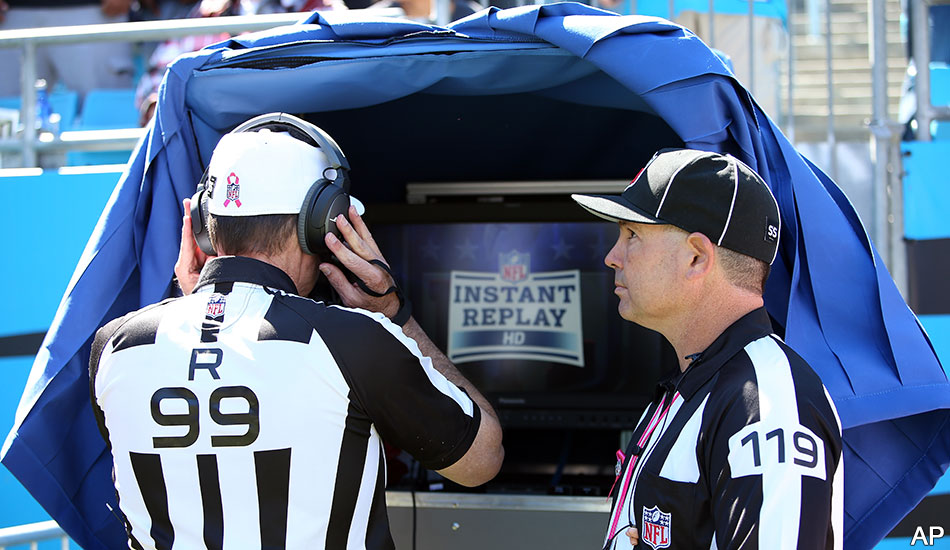
NFL Ops has more specific details on 2017 Rules Changes and Points of Emphasis.
NFL Player Changes / Team Updates
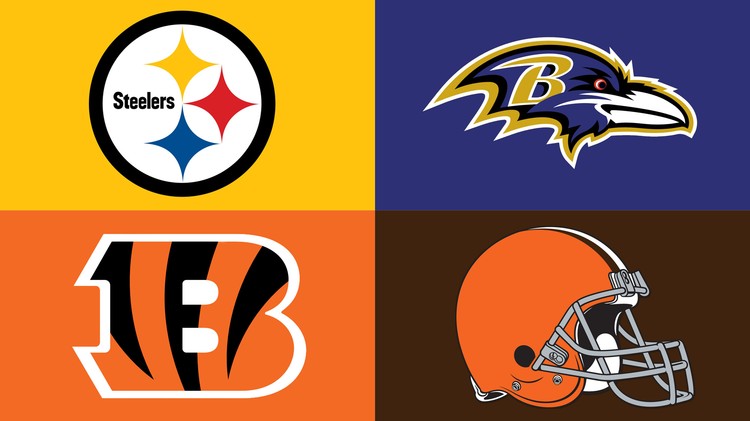
AFC North
Baltimore Ravens - Added Danny Woodhead (RB), Jeremy Maclin (WR), have suffered some off-season injuries (Kenneth Dixon (RB), Dennis Pitta (TE), Crocket Gillmore (TE)) that will severely impact their ability to make the playoffs and have positional depth late in the season.
Cincinnati Bengals - Added John Ross (WR), Joe Mixon (RB) from the 2017 draft. Coach Marvin Lewis does not have a contract extension, he could be out the door if the Bengals don't achieve something notable in 2017.
Cleveland Browns - Added Kenny Britt (WR) and Brock Osweiler (QB), drafted David Njoku (TE) and DeShone Kizer (QB). Losing Terrelle Pryor (WR), Gary Barnidge (TE), and Josh McCown (QB) leaves the Browns as a younger team going through a QB competition.
Pittsburgh Steelers - Added Knile Davis (RB) in free agency, as well as JuJu Smith-Schuster (WR) and James Conner (RB) from the 2017 draft. Martavis Bryant will return this year which should provide a needed boost to the offense, the loss of Ladarius Green (TE) in the off-season still leaves a question mark at the tight end position.
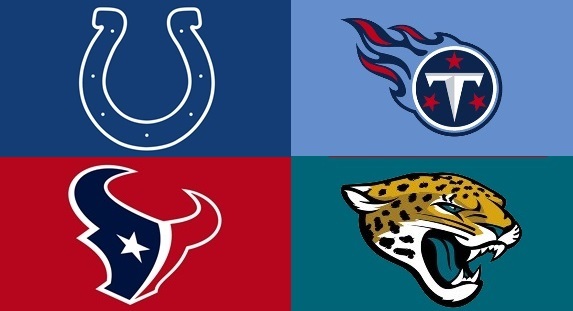
AFC South
Houston Texans - Added Deshaun Watson (QB) in the 2017 draft. The Texans have a QB competition between Watson and the incumbent Tom Savage. The loss of Will Fuller (WR) (2-3 months, collarbone) will cause the team to lean on their running game and on DeAndre Hopkins (WR), looking to bounce back after a disappointing 2016 season.
Indianapolis Colts - Not a lot of offensive additions in the off-season. The Colts' biggest concern is the health of Andrew Luck (QB), who underwent off-season surgery on his shoulder and is still not on the field. Amazingly, Frank Gore (RB) looks to still be the starter in Indianapolis - he may just play forever.
Jacksonville Jaguars - Added Leonard Fournette (RB) in the 2017 draft. Blake Bortles' (QB) quality of play this season will make or break the Jaguars.
Tennessee Titans - Added Eric Decker (WR), drafted Corey Davis (WR). The Titans lost Kendall Wright (WR) but upgraded their wide receivers overall with the addition of Decker and Davis. Marcus Mariota (WR) and Co. currently have the arrow pointed up and the weapons to do some damage.
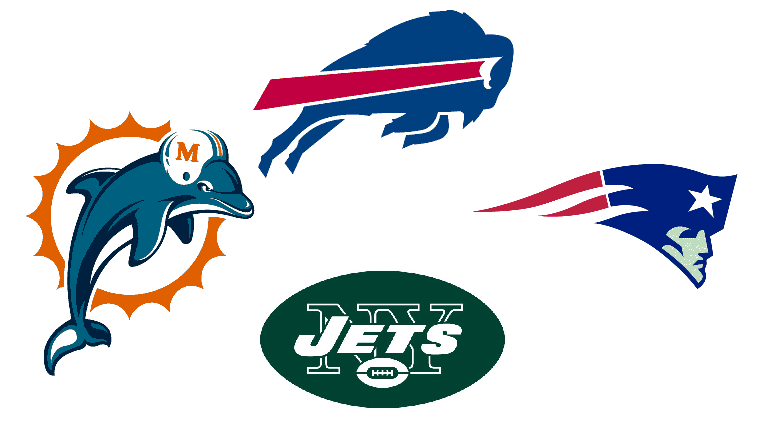
AFC East
Buffalo Bills - Added Jordan Matthews (WR) via trade, and Zay Jones (WR) in the 2017 draft. Rex Ryan was fired, the Bills hired a new coach and GM, Sammy Watkins (WR) was traded and the team also lost Mike Gillislee (RB). Rough sledding ahead for Tyrod Taylor (QB) and the Bills in 2017 as they try to find their footing.
Miami Dolphins - Added Jay Cutler (QB). Ryan Tannehill (QB) re-injured his left knee, causing the Dolphins (Adam Gase, specifically) to bring back retired QB Jay Cutler. The offensive and defensive talent is there if Jay Cutler can steer the ship adequately in 2017.
New England Patriots - Added Brandin Cooks (WR), Dwayne Allen (TE), Mike Gillislee (RB), Rex Burkhead (RB). The Patriots lost LeGarrette Blount (RB) and Martellus Bennett (TE), but that really doesn't matter. 40-year-old Tom Brady (QB) will lead this team to the playoffs once more, as long as he can stay healthy.
New York Jets - Added Josh McCown (QB). The Jets lost both of their veteran receivers Brandon Marshall (WR) and Eric Decker (WR) in the off-season, and Quincy Enunwa (WR) is out for the year with a neck injury (bulging disc). The QB competition is not even remotely interesting, and it will be a surprise if the Jets are not the worst team in the NFL this season.
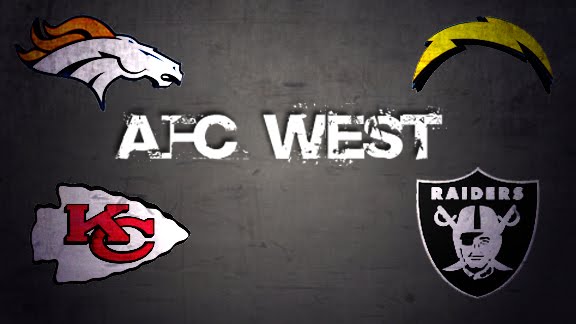
AFC West
Denver Broncos - Added Jamaal Charles (RB). Trevor Siemian (QB) is currently winning the QB competition in Denver, although Paxton Lynch (QB) is expected to supplant him at some point this season, if not by Week 1. Charles may or may not amount to any fantasy relevance depending on his health. The Broncos need to score more points on offense to go along with what is still one of the best defenses in the league.
Kansas City Chiefs - Added Patrick Mahomes (QB) and Kareem Hunt (RB) in the 2017 draft. The loss of Jeremy Maclin (WR) will have an impact on the Chiefs this season, but Travis Kelce (TE) and Tyreek Hill (WR) should have no problem carrying the banner. The big question is whether or not we'll see the rookie QB out on the field in 2017.
Los Angeles Chargers - Added Mike Williams (WR) in the 2017 draft. Williams has not been healthy so far this preseason, but the Chargers have enough weapons already to let him get back to 100%. Will the team be affected by its move to Los Angeles? Probably. The loss of Danny Woodhead (RB) is mostly spelled by Branden Oliver (RB) backing up a surging Melvin Gordon (RB).
Oakland Raiders - Added Marshawn Lynch (RB), Cordarrelle Patterson (WR). Latavius Murray (RB) departed from the Raiders in the off-season, and that's no issue now that the Raiders have been able to bring Lynch on board. There's a promising season ahead here after last year's late injury to Derek Carr (QB) cut 2016 short.
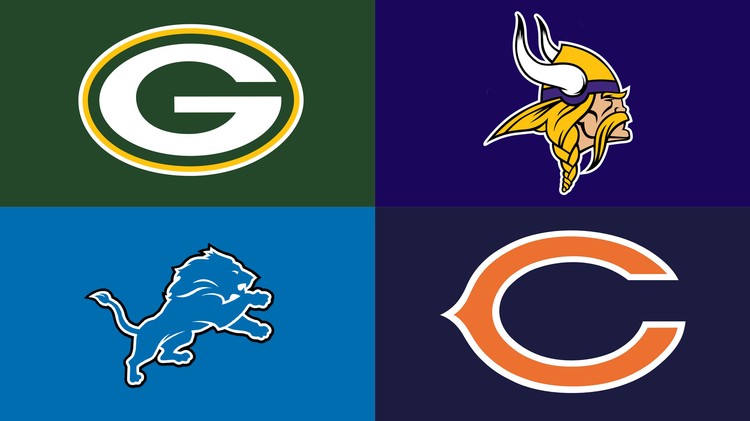
NFC North
Chicago Bears - Added Mike Glennon (QB), Markus Wheaton (WR), Kendall Wright (WR), Victor Cruz (WR). Added Mitchell Trubisky (QB) from the 2017 draft. The QB competition in Chicago is heating up after Trubisky performed better than expected in his first preseason game. John Fox's future in Chicago relies on whether or not the Bears have a successful season in 2017.
Detroit Lions - Added Kenny Golladay (WR) in the 2017 draft. Lost Anquan Boldin (WR). Eric Ebron (TE) is likely to step up his production this year, along with now healthy Ameer Abdullah (RB). Both are intriguing prospects in redraft leagues. Golladay is blowing it up in the preseason but it remains to be seen whether that will translate to regular season fantasy production behind Golden Tate (WR) and Marvin Jones (WR).
Green Bay Packers - Added Martellus Bennett (TE). The Packers lost Eddie Lacy (RB), James Starks (RB), and Jared Cook (RB) in the off-season, but none of them are necessary to the offensive nucleus that is Aaron Rodgers (QB) and his receivers. The Packers can always put points on the scoreboard, the question is if they can prevent enough points scored against them with their defense in 2017.
Minnesota Vikings - Added Michael Floyd (WR). Added Dalvin Cook (RB) in the 2017 draft. With Adrian Peterson (RB) off to New Orleans, the Vikings have to put their faith in their defense to keep them in games for an opportunity to challenge the Packers for dominance in the NFC North.
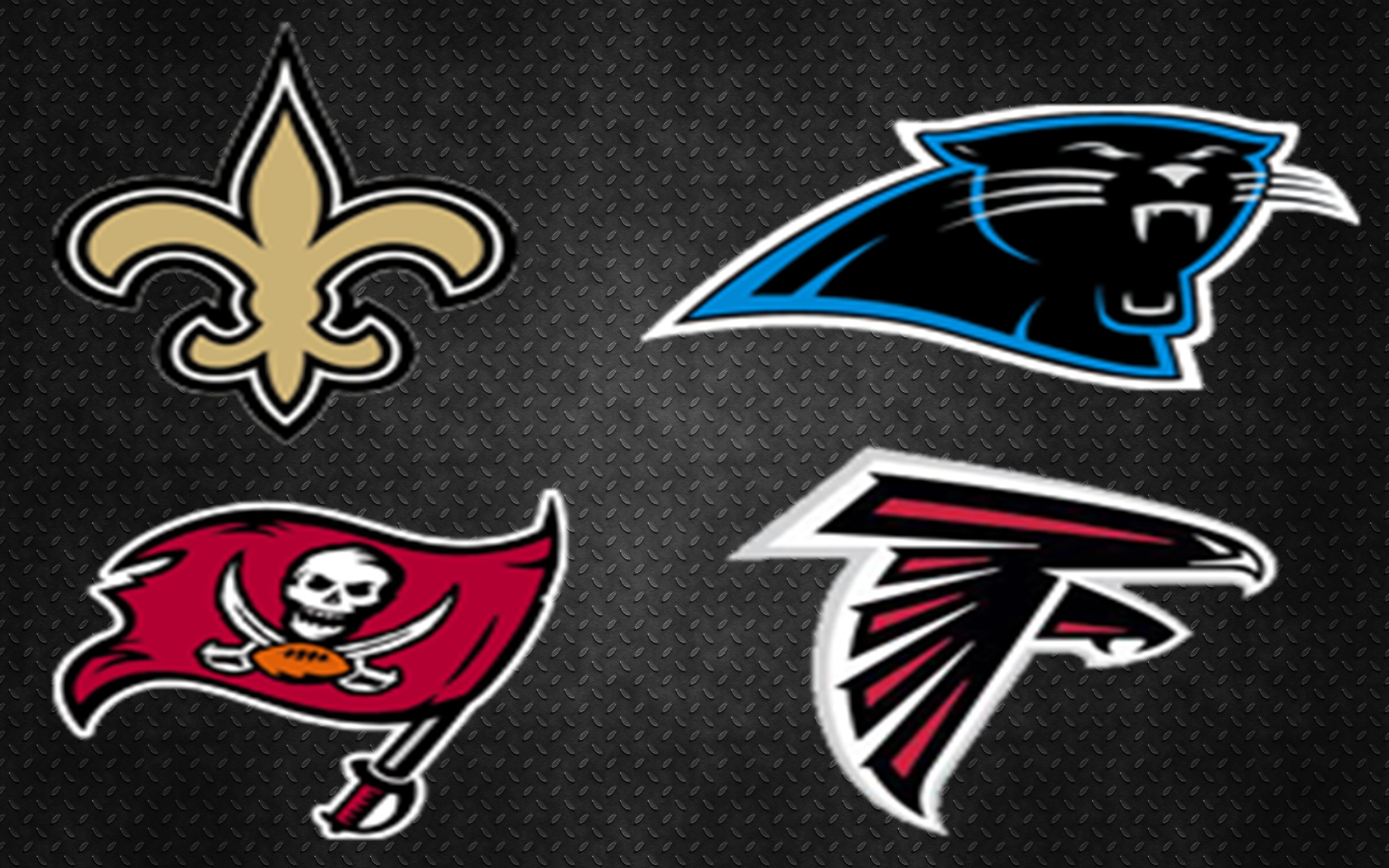
NFC South
Atlanta Falcons - Not a lot of changes in the off-season. Previous OC Kyle Shanahan is now the coach of the 49ers, so there will some differences in the offensive play calling - it has been suggested that Julio Jones (WR) will be targeted more but in general the main players like Matt Ryan (QB) and Devonta Freeman (RB) should keep it business as usual in Atlanta.
Carolina Panthers - Added Christian McCaffrey (RB), Curtis Samuel (WR) in the 2017 draft. Lost Ted Ginn (WR) in the off-season. The Panthers will easily be in the running for a playoff position, but newly acquired players like McCaffrey may need some time to develop as offensive tools.
New Orleans Saints - Added Adrian Peterson (RB), Ted Ginn (WR). Added Alvin Kamara (RB) in the 2017 draft. It remains to be seen what Peterson has left in the tank, but the Saints' long-running combination of Drew Brees (QB) and Sean Payton (HC) may be running on fumes as well. In the meantime, Michael Thomas (WR) should continue to dominate downfield this year.
Tampa Bay Buccaneers - Added DeSean Jackson (WR). Added O.J. Howard (TE), and Chris Godwin (WR) in the 2017 draft. The Hard Knocks squad is poised to have a successful season in 2017 with a lot of offensive weapons for Jameis Winston (QB) to employ.
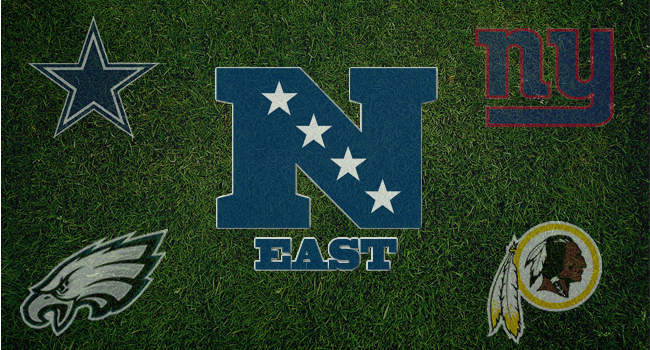
NFC East
Dallas Cowboys - Added Ryan Switzer (WR) in the 2017 draft. A good amount of off-season drama surrounds the Cowboys this year, most notably including a 6-game suspension handed down to Ezekiel Elliott from Roger Goodell and the NFL. Other than that, the team remains mostly the same but has replaced some of their secondary with new faces. We'll see how that pans out.
New York Giants - Added Brandon Marshall (WR). Added Evan Engram (TE) in the 2017 draft. Marshall should provide a boost to the offense - Eli Manning (QB) needs to improve on last year's efforts but shouldn't have an issue with the huge talents of Marshall and Odell Beckham Jr. (WR), not to mention Sterling Shephard (WR). A concern is the running game - with the loss of Rashad Jennings (RB), can the Giants depend on Paul Perkins (RB) to lead the push on a weekly basis?
Philadelphia Eagles - Added Alshon Jeffery (WR), Torrey Smith (WR), and LeGarrette Blount (RB). With the additions of Jeffery and Smith, the Eagles shed Jordan Matthews (WR) and Dorial Green-Beckham (WR) in the off-season. Ryan Mathews (RB) was just recently cut from the team, and it will be interesting to see how all of these additions mesh together over the season.
Washington Redskins - Added Terrelle Pryor (WR). Lost Desean Jackson (WR) and Pierre Garcon (WR). Kirk Cousins is playing on a franchise tag, and Pryor is signed to a one-year "prove it" deal. The Redskins are certainly a formidable team offensively with weapons like Jamison Crowder (WR) and Jordan Reed (TE), but may have issues at RB as we see who comes out on top at the position over the course of the year between Rob Kelley (RB) and Samaje Perine (RB).
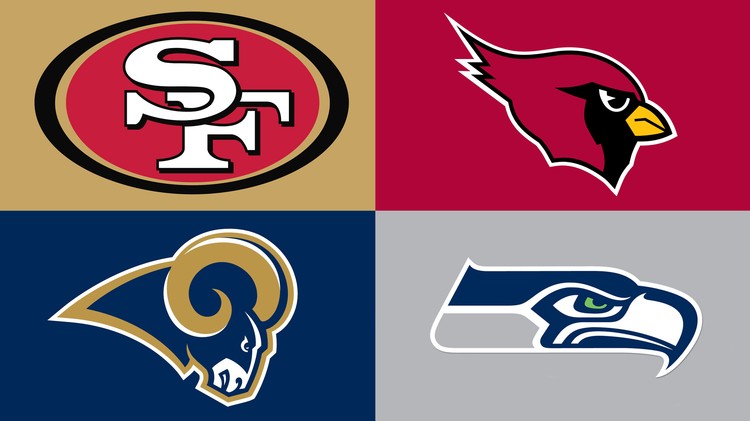
NFC West
Arizona Cardinals - Not many changes in the off-season. The Cardinals are still led by Carson Palmer (QB), Larry Fitzgerald (WR), and David Johnson (RB). They still have the opportunity to go far into the playoffs, but the age of Palmer and Fitzgerald could become a factor as the grueling season plows onward.
Los Angeles Rams - Added Sammy Watkins (WR), Robert Woods (WR). The Rams are trying to reinvent themselves, and most of that hinges on the success of Jared Goff (QB), now in his 2nd year as starting QB. With a dynamic offensive weapon like Watkins, a strong future in Todd Gurley (RB), and a talented defense, this team could hit .500 in 2017.
San Francisco 49ers - Added Brian Hoyer (QB), Pierre Garcon (WR), Marquise Goodwin (WR). New head coach Kyle Shanahan is going back to the drawing board and the 49ers have separated from Colin Kaepernick (QB), Blaine Gabbert (QB), Torrey Smith (WR), Quinton Patton (WR), and probably most importantly, Chip Kelly (HC).
Seattle Seahawks - Added Eddie Lacy (RB). The excitement this year from the Seahawks' camp mostly comes from the possibility of a resurgence from Lacy (though Thomas Rawls (RB) is a contender to cut into or take over the role as lead back), a healthy Jimmy Graham (TE), and a continuation of the success between Russell Wilson (QB) and Doug Baldwin (WR).
Rookie Report: The Fact Sheet – TE Edition
Welcome back to the Rookie Report! We’re about to get into the full swing of the preseason, which means your fantasy draft is probably fast approaching. Today I continue my preseason look at the rookie class. If you missed my QB fact sheet or running back fact sheet, you can find the QBs here, and the RBs here, but today I’m looking at the tight ends. The premise is simple. I’m going to give you some cold hard facts that apply to the rookie tight end class based on things like draft capital, college production, and coaching tendencies, and then give you my interpretation of what those things mean for 2021 season and beyond. Since most dynasty rookie drafts are over, the info is going to slant towards redraft leagues, but there will be some dynasty tidbits thrown in as well. Let’s dive in…
FACT:
The average TE4 in the past 5 seasons has scored 195.6 PPR points. Only 2 rookie tight ends have ever scored more PPR points than that, most recently Keith Jackson in 1988. Kyle Pitts is being drafted as the TE4 in redraft leagues.
What it means:
As you might expect, any rookie tight-end overview might as well just be called the Kyle Pitts article. A lot of these facts are going to focus on Pitts. What this particular stat is telling you is that Pitts will need to post the best rookie TE season of the last 30 years to be worth his ADP. While that’s within his range of outcomes, I’m not sure it’s a bet that I’m willing to make. Maybe if I dig into some of the reasons why he’s so highly regarded I can get a bit more clarity…
FACT:
In all the years that Arthur Smith was on the offensive coaching staff for the Titans (since 2012), they’ve never ranked higher than 19th in the league in pass attempts. In his two years as the offensive coordinator, they ranked 31st and 30th.
What it means: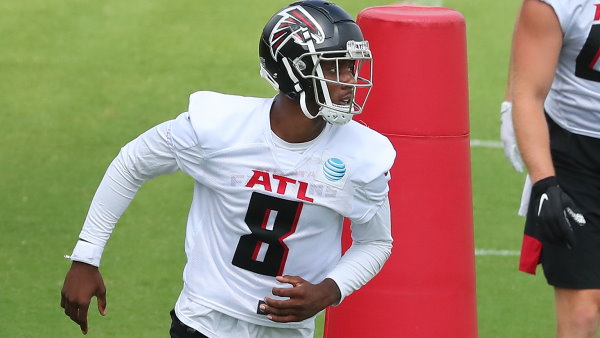
A big piece of the argument in Kyle Pitts’ favor for 2021 is that he steps in as the number 2 target in one of the highest passing volume offenses in the league, but will they stay a high-volume passing offense? Atlanta has ranked in the top-10 in passing attempts in the league in 10 of the last 12 seasons, and in the top-5 in 6 of the last 9, but Arthur Smith would prefer if the Falcons’ offense is more balanced in 2021 if his coaching history is any indication. The coaches that Smith cut his teeth under in the NFL had run-heavy offenses, and Smith continued that in his two seasons as the offensive coordinator.
The Falcons don’t have Derrick Henry, and they have a Vegas win total of just 7 games, so they aren’t going to rank 30th in pass attempts this season like the Titans did in 2020. They’re still likely to throw substantially less often this season. It’s entirely possible they fall out of the top-10 after ranking 4th in pass attempts last year. Don’t be surprised if they throw the ball fewer times in 17 games this season than they did in 16 games in 2020. If you’re penciling in the Falcons for 625+ pass attempts, and 120+ targets for Pitts, you’re probably setting those marks too high.
FACT:
Since 1980, there have been 7 tight ends selected in the top-10 picks in the NFL draft. Only Junior Miller (156.2 PPR points in 1980) scored 100 or more PPR points as a rookie.
What it means:
Pitts’ lofty draft capital is another brick people use in building the case for him, but in the last 41 years, only one tight end drafted in the top 10 finished as a top-10 fantasy tight end as a rookie. None of those players were drafted quite as highly as Pitts (4th overall), but Kellen Winslow and Vernon Davis were both picked 6th, Junior Miller was picked 7th, and TJ Hockenson was picked 8th and was the first non-QB offensive player drafted in 2019. While I agree with most folks that Pitts is nearly a lock to finish as a top-10 tight end in 2021, every single tight end drafted in the last 4 decades with similar draft capital to Pitts has underwhelmed as a rookie.
FACT:
Since 1990, there have been 34 tight ends drafted in the first round of the NFL draft. Only 2 of them (Tony Gonzalez and Greg Olsen) have more than 3 seasons with 800 or more receiving yards. There have been 8 non-first-round picks with more than three 800-yard seasons in that span.
What it means:
This stat looks at Pitts’ draft capital through the dynasty league lens. The true elite producers at tight end have often come from unexpected places. Gronk was drafted in the 2nd round. Travis Kelce was a third-round pick. Darren Waller was a 6th-rounder. George Kittle a 5th, Shannon Sharpe a 7th, and Antonio Gates an undrafted free agent. The NFL has had a really hard time identifying the true difference-makers at the position for a long time. Pitts is already going as the 25th overall pick in dynasty start-up leagues. At that price point, you basically need him to have a career like Tony Gonzalez, Antonio Gates or Travis Kelce where he is a perennial top-3 fantasy tight-end to be worth what you’re paying. If his career looks more like Greg Olsen’s or Vernon Davis’, you’re going to regret ponying up for him.
FACT:
According to PlayerProfiler, Noah Fant had a higher college dominator rating, an earlier breakout age, and a higher SPARQ-x score than Kyle Pitts
Vernon Davis was better than Pitts in all those areas except breakout age, but Davis also ran a faster 40-yard dash than Pitts.
What it means:
Before Pitts landed in Atlanta as the 4th overall draft pick, it was his size, athleticism, and college production that had people calling him the greatest tight end prospect of all-time, but there’s a case to be made that a player drafted just two years ago was a better athlete and was more productive in college than Pitts…and Vernon Davis in 2006 is probably the most athletic tight end prospect of all-time.
In fairness to Pitts, his overall combination of draft capital, landing spot, athleticism, and college production hasn’t been duplicated in the league’s history. He truly is among the best tight-end prospects to ever come into the league, if he’s not *the* best. Barring injury he’s a virtual lock to finish as a top-10 tight end this season. Just know that if you draft Pitts at his ADP in any format, you’re betting on him posting a historic rookie season. For me, the gap between Pitts and some of the tight ends that have come before him and failed to stand out as rookies isn’t wide enough for me to make that bet.
FACT:
In the past 5 seasons, the average TE12 has scored 138.5 PPR points.
Since 2000, only 6 rookie tight ends have scored more than that. Four of them were drafted in the first or second round of the NFL Draft.
What it means:
There isn’t a lot of reason to consider any rookie tight ends taken in the 3rd round or later in redraft unless it’s on the waiver wire after they show you something in-season. Since 2000 there have been 182 tight ends drafted in the 3rd round or later that at least caught one pass as a rookie, and another 141 undrafted free agents who did. Only 2 of those players scored 138.5 or more PPR points as a rookie. Don’t waste a draft pick thinking you can pick the one-in-150 guy who has a solid rookie season. This approach doesn’t apply to dynasty though. Plenty of quality tight ends have come from after the first two rounds – Travis Kelce, Jason Witten, George Kittle, Antonio Gates, etc. They just didn’t produce as rookies.
FACT:
Since 2000, there have been 55 tight ends drafted after the 2nd round of the NFL draft that were 24 years old or older as a rookie (according to Pro-Football-Reference). Three of those 55 tight ends caught for more than 350 receiving yards as a rookie. All three of them – George Kittle, Owen Daniels, and Jimmy Graham - went on to post multiple top-10 fantasy seasons. None of the other 52 posted multiple TE1 seasons.
What it means:
We’re talking about Jacob Harris here. Harris is one of the more intriguing day-three tight-end picks in this year’s draft. He’s a converted wide receiver, so he has the receiving skills that fantasy players look for, and he landed in a good situation with a quality QB and a creative coach who has said glowing things about him since the selection…but at 24, Harris is old for a rookie. Like most rookie tight ends, I don’t expect him to be useful in redraft leagues, but he’s worth a stash in dynasty leagues to see how he performs this year. A tight end with first or second-round draft capital, even an older one, is going to get opportunities at some point. As a 3rd-rounder or later though, those older tight ends need to show something in year one or they probably won’t get much of a shot in later seasons. Dennis Pitta and Brandon Myers are the only TEs since 2000 that fit this category to post even one TE1 season after failing to hit 350 yards as a rookie. If Harris gets to 350+ yards as a rookie, you should be looking to buy or hold into year two. If he fails to get there, you should probably be looking to sell at any moment where an offseason narrative causes his value to spike.
FACT:
Since Mike Tomlin took over as head coach in 2007, the Steelers have drafted 8 tight ends (including Pat Freiermuth this season). Only Matt Spaeth played at least 30% of the offensive snaps as a rookie (He played 40%).
What it means:
Pat Freiermuth probably isn’t going to be on the field as much as you’d like him to be this season. He does have the highest draft capital of any tight end drafted in the Tomlin era, but I’d expect his rookie usage to be similar to Spaeth, who was a third-round pick in 2007. Eric Ebron returns after being targeted 91 times in 2020, and while he can make frustrating blunders at times, he’s also finished as a top-15 fantasy tight end in 5 of the last 6 years. If Ebron stays healthy, he’s going to be the team’s TE1 and Freiermuth won’t be much more than a TD dart throw for most of his rookie season. 2021 is the last season of Ebron’s contract, so the path is clear for the rookie from Penn State to be the lead tight end for the Steelers in 2022. You should be looking to trade for him in-season in dynasty leagues if your league-mate who has him gets frustrated with his lack of rookie production.
That’s all I’ve got for the tight end class. Hopefully, it helps give you some clarity on these guys as you head into your drafts. I’ll be back next week with a look at the wide receivers, but feel free to hit me up on Twitter (@Shawn_Foss) if there’s anything written above you want to yell at me about. As always: good luck, trust your gut, and have fun. It’s just a game.Recent Articles
-
NFL Confidence Pool Picks & Strategy 2024 - Week 18
 To say this has been a year of uncertainty is an understatement. So many injuries, coaching changes, player issues shaped…in Fantasy Football / NFL
To say this has been a year of uncertainty is an understatement. So many injuries, coaching changes, player issues shaped…in Fantasy Football / NFL -
NFL Confidence Pool Picks & Strategy 2024 - Week 17
 Christmas is indeed the time of giving. And this year, the NFL is giving us a double-header on Christmas Day…in Fantasy Football / NFL
Christmas is indeed the time of giving. And this year, the NFL is giving us a double-header on Christmas Day…in Fantasy Football / NFL -
NFL Confidence Pool Picks & Strategy 2024 - Week 16
 Normally, being just a few weeks away from the end of the season, playoff positions are solidified and we need…in Fantasy Football / NFL
Normally, being just a few weeks away from the end of the season, playoff positions are solidified and we need…in Fantasy Football / NFL -
NFL Confidence Pool Picks & Strategy 2024 - Week 15
 Finally! They’re done! We are heading into week 15 and FINALLY we are done with bye weeks! 16 games a…in Fantasy Football / NFL
Finally! They’re done! We are heading into week 15 and FINALLY we are done with bye weeks! 16 games a…in Fantasy Football / NFL
 Please wait...
Please wait...